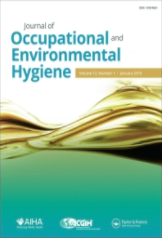 Earlier this year, an environmental journal told an activist group it was going to retract a study about the safety of roofing products made from asbestos. Now the journal has let the authors withdraw the paper — a different process, according to the journal.
Earlier this year, an environmental journal told an activist group it was going to retract a study about the safety of roofing products made from asbestos. Now the journal has let the authors withdraw the paper — a different process, according to the journal.
The move follows multiple letters from critics asking to retract a study, which found exposure to asbestos-containing roofing products to be within safe limits. The study’s critics claimed that it contains multiple problems, including not declaring the approving editor’s links with the asbestos industry, grouping together different materials with varying levels of asbestos exposures, and providing misleading information.
Although the Journal of Occupational and Environmental Hygiene (JOEH) initially said it planned to retract the paper, last month, Stephen Reynolds, president of JOEH’s board of directors, sent a letter to Kathleen Ruff, director of the organization Right On Canada, saying plans had changed:
…we are writing to inform you that the authors have decided to withdraw the article by Lotter et al., titled “Airborne asbestos exposures associated with the installation and removal of asbestos-containing roofing products.” The Board of Directors affirms our initial opinion, that the manuscript, which is a literature review, should have been submitted as a Review article, rather than as a Column article. As a result, the manuscript did not receive the peer review to which a Review article is subject. The JOEH Board of Directors is reviewing and updating the Journal’s procedures and policies to prevent similar situations from occurring in the future.
We’ve always considered withdrawals to be equivalent to retractions — but Reynolds told us he believes they’re different. That is, he said, withdrawals don’t put all the onus on the study’s authors, and acknowledge some responsibility on the journal’s part for publishing the paper in the first place.
There is some merit to considering author-initiated retractions differently from those prompted by the publisher, and other publishers distinguish between retractions and withdrawals — Elsevier, for instance, will call the removal of an article in press — published online, not yet in print — a “withdrawal,” but once a paper is in print, it’s considered “published,” which requires a formal retraction and explanation, according to the publisher.
The trouble with Elsevier’s policy, however, is that withdrawals sometimes receive unhelpful notices of what went wrong — simply, “this article has been withdrawn.” And unfortunately, that’s what JOEH has now done in its withdrawal notice:
This article has been withdrawn.
The journal, which is published by Taylor & Francis, has also removed the paper entirely from its site, contrary to guidelines from the Committee on Publication Ethics.
Reynolds told us the journal’s board of directors voted to withdraw the paper, and informed the study’s authors of their decision, but decided it was “acceptable” when the authors responded offering to withdraw it themselves.
The JOEH study, “Airborne asbestos exposures associated with the installation and removal of roofing products,” did appear in print, and was published online in June, 2016.
On December 5, Ruff posted an article about the JOEH’s withdrawal decision on the Right on Canada website, saying that the explanation “holds no credibility” because
JOEH will conveniently “disappear” the article and conveniently cover up the scientific and ethical misconduct.
On December 11, after JOEH removed the paper and issued the withdrawal notice, Ruff authored another letter to Reynolds and colleagues saying that although she welcomes the removal, JOEH‘s board of directors have
not addressed the serious scientific and ethical improprieties that were brought to its attention.
Reynolds admitted to us that the paper contained “technical issues.”
As we previously reported, JOEH was criticized for not declaring the approving editor Charles Blake’s heavy involvement with asbestos litigation. Blake is not listed as one of JOEH’s column editors on their website.
According to Reynolds, Blake was chosen as a column editor by Leo Old, the journal’s executive column editor, without consultation with the journal’s editor-in-chief or editorial board. As a result, he said, the journal did not look into Blake’s qualifications or potential conflicts of interest. The reason for this, added Reynolds, was that Old was struggling to find someone to look at the paper.
We contacted Old to confirm Reynolds’ claims, but he referred us to publisher Taylor and Francis.
JOEH is now in the process of revising journal policies and filling all gaps in journal protocols and policies that contributed to the problem with the newly withdrawn paper, said Reynolds. For instance, he noted, all relevant parties will now be informed of column articles, and qualifications and conflicts of interests will be evaluated before choosing editors.
For this paper, the researchers can resubmit their paper as a review article, Reynolds said.
We’ve reached out to the study’s first author, Jason Lotter, who is a health scientist at the firm Cardno ChemRisk in Chicago, Illinois, which has ties to the asbestos industry.
We’ll update the post with anything else we learn.
According to the UK’s Health and Safety Executive, asbestos — which is banned in 52 countries — is the “biggest occupational disease risk” among construction workers, leading to two types of cancer, and serious lung diseases.
Like Retraction Watch? Consider making a tax-deductible contribution to support our growth. You can also follow us on Twitter, like us on Facebook, add us to your RSS reader, sign up on our homepage for an email every time there’s a new post, or subscribe to our daily digest. Click here to review our Comments Policy. For a sneak peek at what we’re working on, click here.
Interesting. I wish someone would write about medical journal abuse by the publication of misleading review papers that are purposed to influence the outcomes of litigations, while generating income for the flawed-papers’ authors.